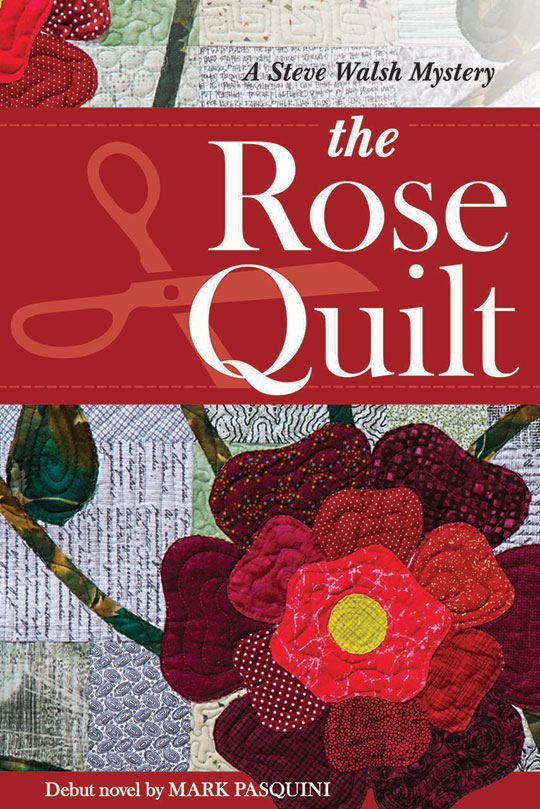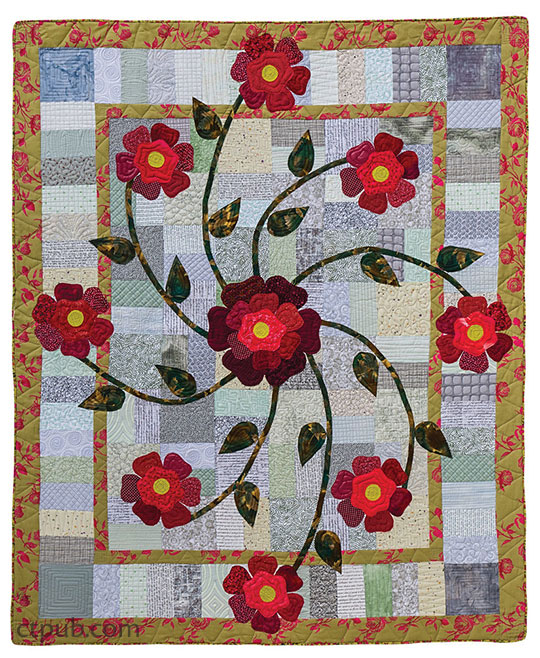How The Rose Quilt Came About
Posted by Mark Pasquini on Jan 22nd 2018
When my sister Katie Pasquini-Masopust suggested that I write a mystery based in the quilting world, I was a little skeptical. Not because I couldn’t do it, but because I was comfortably retired, ready to read the books I wanted, listen to the music I liked, and watch old movies that interested me. My idea of exercise would be sitting on the front porch in my ratty old bathrobe with a morning cup of coffee in my hand, waving to everyone on their way to work. And, repeating this in the afternoon with a drink instead of coffee. (Yes, I am a mean one).
With this project, I had to actually go back to work!
For those who do not know Katie, she is a difficult person to whom to say, "No." So, I didn’t. And thus The Rose Quilt was born.

The tale of the book’s conception is a tale for another blog post; this is the story of the quilt and its integration into the mystery. First, let me explain my talents as an artist and a quilter: there aren’t any. I can’t draw a recognizable stick figure. My sense of color is a source of amusement to all. As one of the characters in the book put it, “I’d probably sew my fingers together.” However, despite these slight discrepancies in ability, I designed the original quilt. I would describe it, but it is like a nightmare you do not want to recall, even in the light of day.
However, in my pride and ignorance, I incorporated this design in the text. No waiting around for Katie to come up with a design for me. At this point I was on a roll. Words appeared like magic on the page. I said, “Charge,” and had as much success as Custer in Montana, at least on the quilt front.
First of all, the backing had a specific purpose, a dying clue. That part of the quilt was mine to design. You will notice this part of the quilt is never shown in any pictures. The idea came to me from a blouse that my mother owned. It was printed with small flowers and their Latin names. During the many lectures I received as a teen, I memorized every name on that blouse. She seemed to wear it especially for these sessions. I modified it to fit the story. So, if you wonder that any reputable company would print my backing design, blame me.
As to the design on the quilt, I was glad I wasn’t in hearing range of Katie’s opinion. Over the years I have come to recognize Katie’s ‘tells’ on what she thinks of an idea. When she likes an idea, she discusses and refines it. When she doesn’t particularly like an idea, she comments on it and overlays it with vast improvements. When she has no use for an idea, she acts like it never existed and comes up with something that is brilliant. I heard not a word.
However, as I wrote above, I was going full bore. I had already fully described my version of the prize quilt when Katie came up with her idea. Rewrite time. Back on track, I heard from Katie again. Slight design change. Rewrite time. Rolling along, another email beeped in. Improved binding. Rewrite time. Finally, I said to myself: “Stop rewriting until the artist is done.” Good advice, which I took.

When I finally got a picture of the final product, I did one final minor rewrite and sent the book off to the editor. (Another, humbling, tale to be told someday).
The object lesson I learned from this was to not get ahead of myself. Should Steve Walsh grace the pages of another tale ( The Map Quilt Mystery, perhaps?), I will have to learn a little patience, (all right, family, stop laughing). And a sign over my desk will say: The Quilt Comes First.







